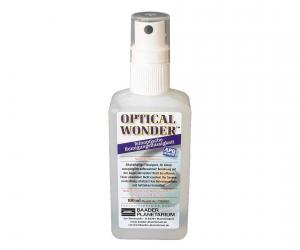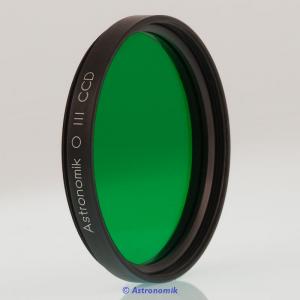- Telescopes
- Overview:
Telescopes - Achromatic Refractor
- Apochromatic Refractor
- Overview:
Apochromatic Refractor - ED Refractor - less color aberration than an achromatic
- SD APO - color free 2-element APO objective
- EDT APO - 3 element ED objective
- High End APO with 3-element APO objective - no color aberation
- Flatfield APO with flat field for Astrophotography
- All Apos and EDs from all manufacturers - large overview
- TS APO and ED from Japan with high quality optics
- Overview:
- Newtonian Telescopes
- Dobsonian Telescopes
- RC Ritchey Chretien Telescopes
- Casssegrain Telescopes
- Reflektor Telescopce with Lens Correcture
- Maksutov Cassegrain Telescopes
- GoTo Telescopes
- Solar Telescopes H-Alpha
- Overview:
- Mounts Tripods Rings Rails Power Supply ...
- Overview:
Mounts Tripods Rings Rails Power Supply ... - Mounts Equatorial with GoTo
- Mounts Equatorial without GoTo
- Mounts Azimutal with GoTo
- Mounts Azimutal without GoTo
- Mounts GoTo - Harmonic Drive
- Travel mounts for astro imaging
- Tripods Piers Polar Wedges
- Mount Control & Electronics
- Dovetail Clamps, Plates and Mount Adapters
- Tube Rings
- Power Supply
- Counterweights Balance Weights
- Mount Accessories - Other
- Overview:
- Telescope Accessories
- Overview:
Telescope Accessories - Eyepieces
- Barlows & Reducer Lenses
- Diagonal Mirrors and Prisms
- Binocular Viewers
- Finder Scopes
- Telescope Collimation and Test
- Cleaning Tools
- Transport and Storage
- Dust protection for Telescopes & Accessories
- Stray Light Protection
- Dewcaps and Heater
- Focusers, Adapters, Motorfocus
- Telescope DIY & Improvement
- Other telescope accessories
- Replacement Parts
- Overview:
- Filters
- Overview:
Filters - Color Filters and Color Filtersets
- Nebular Filters for Visual Observing
- Neutral-Density and Polfilter
- Photo Narrowband Nebular Filters
- Photo Broadband Filters
- Photo Planetary Filters
- Photo R-G-B and IR Cut Filters
- Photo - Filtersets
- Photometric Filters
- Clip Filter for DSLR Cameras
- Filter Wheels and Filterslider
- Solar Filters for white light
- Solarfilter for H-Alpha and Calcium
- Overview:
- Adaptors
- Overview:
Adaptors - Adapter 1,25" and 24,5mm
- Adapter 2"
- Adapter T2 - M42x0.75
- Adapter M48x0,75
- Adapter M54
- Adapter SC
- Adapter M63
- Adapter M68
- Adapter to other Threads
- Adapter Extensions
- Adapter camera bayonet
- Adapter Objective Filterthread
- Adapter Quick Changing , Rotation
- Adapter Eyepiece Projection
- Adapters Tilting
- Overview:
- Astrophotography and Photography
- Overview:
Astrophotography and Photography - Cooled Cameras
- Cameras without Cooling
- Deep-Sky Cameras uncooled
- Set-Offers Camera, Filter, Wheels
- Acessories for Cameras
- Travel mounts for astro imaging
- Imaging Correctors for Telescopes
- Autoguiding Cameras & Sets
- Everything for Guiding
- Focusing aids - Bahtinov mascs
- Flat Field foils and boxes
- Lenses for Cameras
- Piggyback Camera Holder
- Camera Bags, Photocases & more
- Digital Camera and Smartphone Adapter
- Other photo accessories
- Overview:
- Binoculars, Spotting Scopes, Microscopes, Range Finders
- Overview:
Binoculars, Spotting Scopes, Microscopes, Range Finders - Spotting Scopes and Acessories
- Roof Prism Binoculars
- Binoculars with Porro prisms
- Binoculars from 100mm Aperture
- Binoculars with 1,25 inch eyepieces
- TSMX APO Binoculars
- Binoculars for Astronomy
- Binoculars Hiking Bird watching
- Monoculars - Opera Binoculars
- Accessories for Binoculars
- Range Finders
- Microscopy
- Bags for Phototripods & Binoculars
- Overview:
- Phototripods and Binomounts
- Books, Software
- Overview:
Books, Software - Books for Astronomy Beginners
- Star Charts and Planispheres
- Books about our Solar System
- Observing Tips for Amateurs
- Popular Astronomy Literature
- Teaching material
- Astrophotography books
- Telescopes, Observatories, Construction
- Calendars Yearbooks
- Software, Star Charts
- Books for Microscopers
- Books Nature and Animals
- Nature Photography TimeLapse
- Overview:
- Night Vision, Magnifiers, Weather, Domes & more
- Beginner Astronomy and Gift Ideas
- Second Hand & Special Offers
- New products
Manufacturer: Astronomik Filter
Product number: 8h0051
EUR299.00new
EUR 299,00
incl. 19 % VAT (DE)
The VAT indicated refers to that applicable in Germany. After logging in, the VAT amount is adjusted to the applicable VAT of the stored delivery country. Therefore, the final price may vary accordingly.
excl. 6.95 € shipping costs (DE)
more details to the shipping costs ...Please log in to calculate shipping costs to your country.
rating: 5.0 of 5Astronomik ASHA12nm2 - H Alpha Filter, 12 nm, 2" thread3
- Details..
- Technical data..
- In the box..
- Reviews..
- Manufacturer infos..
- Safety informations..
The Astronomik H-alpha filter is a narrow band filter for astro photography. The filter lets the H-alpha light of emission nebulae pass and blocks nearly the whole remainder of the spectrum where the sensor is sensitive.
The full width at half-maximum (FWHM) of 12 nm is optimized for the use with common astro cameras and allows the use of very fast optics. It should be noted that the filter has a transmission of up to 99%. Another advantage of the 12 nm filters is the availability of guiding stars for cameras with a built-in-autoguider (SBIG). If you use a very strong filter like our 6 nm filter, you often won’t find a usable guidestar.
An example for an exposure made at the rim a city can be found in "Reviews".
The range of application extends from 1:2.8 to 1:15. Transmission losses and chromatic distortions, which arise with other filters, only occur with Astronomik filters when extremely bright aperture ratios of 1:2 and more come into play.
Main use:
The Astronomik H-alpha filter (12 nm version) increases the contrast between objects, in this case H-alpha emitting nebulae, and the skyglow background. This filter completely suppresses the emission lines of artificial lighting (mercury (Hg) and sodium (Na)) and skyglow.
Other uses: With using the [O III] and the [S II] filters, you can obtain three-color images of emission line objects (gas nebulae) from locations with very strong light pollution. To do so, you would take an image in three different wavelengths, select each one as a color-channel in Photoshop and paste them together as a color image. Achromatic refractors still have chromatic aberrations which make the star images bigger. With lines filters like this one, star images will shrink. The Astronomik 12 nm H-alpha filter may NOT be used for solar observation. If you plan to create color images from emission line data, our CLS-CCD filter is a great choice for the Luminance channel.
Suitability: Visual observation (dark skies): Unsuitable Visual observation (urban skies): Unsuitable Film photography: Reasonable, but very long exposure times CCD and CMOS photography: Very good, huge contrast enhancement at H II-emission nebulae DSLR photography (original): Good, reduced sensitivity in the H-alpha band DSLR photography (astro modified): Very good, huge contrast enhancement at H II-emission nebulae DSLR photography (MC modified): Very good, huge contrast enhancement at H II-emission nebulae Webcam / Video (Planets): Unsuitable Webcam / Video (Deep Sky): Good, good contrast enhancement with bright objects
Technical Data: Transmission of over 97% with the H-alpha line (656 nm) Complete blocking from all disturbing wavelengths up to infrared Parfocal with other Astronomik filters Glass thickness: 1 mm Completely resistant against high humidity, scratches and aging effects Diffraction limited, the filter will not reduce the optical performance of your telescope! Astronomik filters are delivered in a high-quality, long lasting, filter box.
Filter transmission curve:

The horizontal axis is the wavelength in nanometers (nm). 400 nm is deep blue, at 520 nm the human eye senses green and at 600 nm red. At 656 nm is the famous "H-Alpha" emission line of hydrogen. The transmission in % is plotted on the vertical axis. The red line shows the transmission of the filter. Visual filters: The grey line in the background shows the relative sensitivity of the human eye at night. The maximum is at ~510 nm and drops to longer and shorter wavelengths. You can easily see, that you can´t see anything of the H-alpha line at night (even if you can during daylight!) The sensitivity at 656 nm is 0% at night! Photographic filters: The grey line in the background shows the sensitivity of a typical astro camera sensor. The most important artifical emission lines are shown in orange. The artifical light pollution is dominated by see mercury (Hg) and sodium (Na), which are used in nearly all streetlights. The most important emission lines from nebulas are shown in green. The most important lines are from ionized hydrogen (H-alpha and H-beta), double ionized oyxgen ([O III]) and ionized sulfur ([S II]). The square brackets indicate that these lines are forbidden.
The full width at half-maximum (FWHM) of 12 nm is optimized for the use with common astro cameras and allows the use of very fast optics. It should be noted that the filter has a transmission of up to 99%. Another advantage of the 12 nm filters is the availability of guiding stars for cameras with a built-in-autoguider (SBIG). If you use a very strong filter like our 6 nm filter, you often won’t find a usable guidestar.
An example for an exposure made at the rim a city can be found in "Reviews".
The range of application extends from 1:2.8 to 1:15. Transmission losses and chromatic distortions, which arise with other filters, only occur with Astronomik filters when extremely bright aperture ratios of 1:2 and more come into play.
Main use:
The Astronomik H-alpha filter (12 nm version) increases the contrast between objects, in this case H-alpha emitting nebulae, and the skyglow background. This filter completely suppresses the emission lines of artificial lighting (mercury (Hg) and sodium (Na)) and skyglow.
Other uses:
Suitability:
Technical Data:
Filter transmission curve:

| Transmission at the H-alpha line (656 nm): | over 97% |
| FWHM: | 12 nm |
| Carrier material: | optically polished substrate |
| Glass thickness: | 1 mm |
| Parfocal: | with other Astronomik filters |
| Anti reflective coating: | completely resistant against high humidity, scratches and aging effects |
| Material of cell: | aluminium |
Image (c) by Wolfgang Ransburg
Location: Munich east
Instrument: William Fluorstar 110 Refractor
Camera: Artemis 4021
Filter: Astronomik H-Alpha 12 nm

"Several years ago I purchased at Teleskop Service several filters. I checked them recently and I confirm their good quality. The two following Astronomik filters H-alpha and H-beta are fully OK:
Item #8h0051 - Astronomik ASHA12nm2 - H Alpha CCD Filter, 12 nm, Gewinde 2 inch"

Location: Munich east
Instrument: William Fluorstar 110 Refractor
Camera: Artemis 4021
Filter: Astronomik H-Alpha 12 nm

Customer report with measurement
Our customer Michel Willemin from Switzerland measured the transmission of the filter himself. Here is his result:"Several years ago I purchased at Teleskop Service several filters. I checked them recently and I confirm their good quality. The two following Astronomik filters H-alpha and H-beta are fully OK:
Item #8h0051 - Astronomik ASHA12nm2 - H Alpha CCD Filter, 12 nm, Gewinde 2 inch"

| Manufacturer / Importeur: | Vesting e.K. |
| Street: | Storchenweg 6 |
| ZIP / City: | 21217 Seevetal |
| Country: | Germany |
| Telefon number: | +49 40 5114348 |
| Email: | astro@astro-shop.com |
| Website: | www.astro-shop.com |
Safety informations: PDF Download
Recommended accessories
Cleaning & Collimating
TS-Optics Optical Super Microfiber Cleaning Cloth
EUR 4,99RRP EUR 7,95you save 37.2% (EUR 2,96)
Eyepiece-side accessories like Filters
Reviews
Written by Magnar Fjortoft
on 2023-11-28
"A must have filter for users of astro-converted system cameras. The ""wide"" 12 nm bandwith makes it easy to find stars for ultra-precise focusing, still keeping moonlight, street lights and sky glow away."
Written by Axel Pospischil
on 2022-01-26
"Sicher ein super Filter, aber ich musste diesen in die 6nm Version umtauschen, da die Lichtverschmutzung hier sehr hoch ist. *** Erfahrene Astrofotographie-Kollegen sagten, der Aufpreis zum 6nm Filter würde die Kontraste nochmals erheblich steigern. Also vor dem Kauf gut überlegen, ob man nicht doch in die teurere 6nm Version investiert. "
Written by Peter Kocher
on 2021-03-30
"gutes Produkt"
Written by Pascal Hilkens
on 2020-12-15
"The Ha filter forfills my expectations. I took some pictures of the flame & horsehead nebula with good results. Contrast was good enough."
Written by Lothar Arndt
on 2020-11-23
"Anwendung des Produktes ist einfach und das Produkt entspricht 100% den Erwartungen. "
Written by Anton Waltschew
on 2017-04-02
"Ware wie beschrieben, keine Mängel."
Written by Granchelli Maurizio
on 2016-01-12
exzellent














